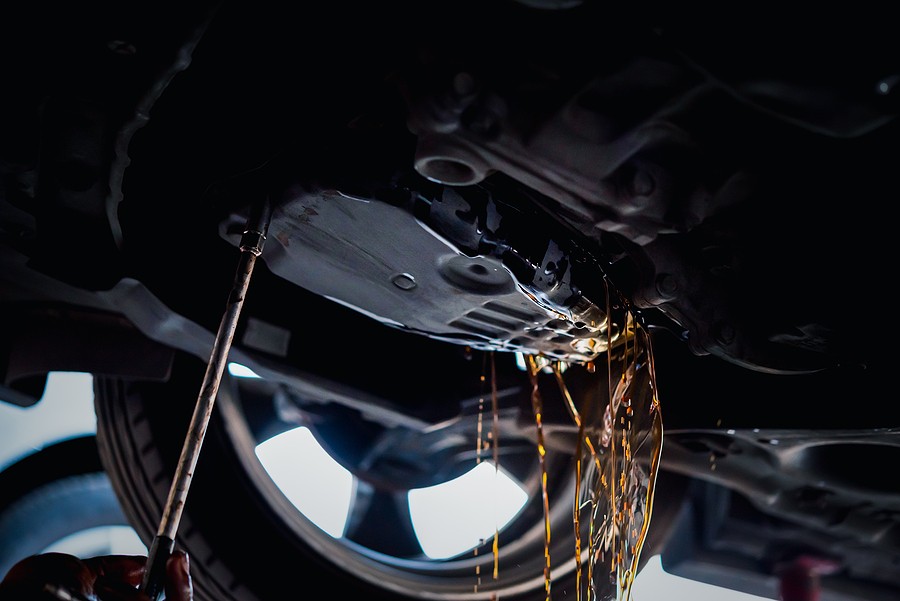Chevrolet has released the latest Chevy Traverse which is the 2021 model. The new model is not that different with the rest of the Traverse line up. If you own this kind of model, you may wonder a lot about mileage, fuel economy and how often should transmission fluid be changed in a Chevy Traverse. The transmission fluid is very important in an engine. The transmission is the system that is needed in order for the vehicle to work. It is composed of gears and gear trains that rotate together in order to generate power for the engine and deliver that power to the wheels. This will in turn create torque to start the engine. The transmission fluid’s main purpose is to lubricate these components in order for all the parts to work together in perfect synchronization.
Without the transmission fluid, the usual wear and tear in the transmission engine will be more tedious. Because of the movements of the components in the transmission system, friction and heat are commonplace elements. The process itself of changing the transmission fluid would not be damaging to your car but neglect in changing it as needed will lead to transmission slips. Transmission slips happen due to the transmission bands wearing out. The bands latch the gears with the transmission. When there is not sufficient transmission fluid, these bands begin to burn and wear out. Changing and repair of this issue will cost a lot.
Since there are so many different cars out there, it is expected that there are also a variety of transmission fluids you can choose from. You must choose what is right for your vehicle. The correct transmission fluid not only depends on the type or brand of car you own or will be fixing, but the type of car transmission also has something to do with what transmission fluid you would choose. There are two transmissions that have been prevalent in cars these days, the automatic transmission and the manual transmission. In the past, the manual transmission fluid has received criticism since it is harder to rely on it on colder climates. Because of this, even vehicles with manual transmission use automatic transmission fluid.
There are several ways to know when you have to change the transmission fluid on your Chevy Traverse. The simplest road to take would be to flip through the owner’s manual. There is a lot of information there you would need especially if you are trying to maintain the optimal performance of your vehicle. You can also find in the owner’s manual how often you should change the transmission fluid for your vehicle. Another way to check if you need to change the transmission fluid is through the dipstick. The dipstick is located at the bottom of the hood of your vehicle. Once you have located the dipstick, you will see markings that will indicate whether you are running low on the transmission fluid or if you just have enough.
One test you can also do with the dipstick is to wipe it onto a cloth or anything like it, a paper towel would also do well with this test, in order to see the color of the transmission fluid. A bright pink colored fluid indicates a healthy transmission fluid which means that you do not have to change it yet. A light brown color with some pink color of the fluid denotes that the transmission fluid should be replaced. But the devastating part would be a damaged transmission which would give off a dark brown color of the transmission fluid and may also show off particles of metal. In simple terms, if it does not look good like that, you may have bigger problems in the transmission system.
For the Chevy Traverse, it is advisable to change the transmission fluid every 30,000 miles or so to avoid transmission slips. By doing so, you can also keep your whole vehicle in good condition as you avoid any major problems in the long run. This is a wise move for any car owner or car enthusiast out there.
How many miles will a Chevy Traverse last?
The Chevrolet Traverse lineup has been known for its comfortability. It is a reliable SUV and is especially good for family trips. It has generous car space and cargo space so it would be the best choice if you plan on going on a vacation with your family or with your group of friends. It does not boast so much with the gas mileage. Frankly speaking, the Chevy Traverse fuel economy is pretty average but it provides a comfortable ride even off the road. The space is something that keeps it on the good choice list of car enthusiasts and car owners. It can even accommodate adults in all the rows. Although it does not show off so much power, still there is so much to gain with the Chevy Traverse than to lose.
Every vehicle or car has its own specifications. The good thing is you will find useful information from the owner’s manual as the gas mileage. This information is indispensable in a vehicle. Mileage does not necessarily show the lifespan of the vehicle but it does have something to do with the usual wear and tear. The lesser mileage, the higher the probability that the vehicle will have the usual setbacks. The Chevrolet Traverse can last for about 200,000 miles.
Do Chevy Traverse have transmission problems?
Frankly speaking, Yes! The Chevrolet Traverse, over the past years, has controversial recalls because of the transmission. The automatic transmission is the one having transmission issues in particular. The most common problem with the transmission is the shifting between gears. Switching between gears feels off as they are delayed. Aside from transmission problems, other car owners and drivers have been complaining about certain systems in the Chevy Traverse. In this section we will delve deeper into the issues or problems that surround the Chevy Traverse. Here are some of the most common problems the majority has encountered with the Chevy Traverse:
- Transmission
There are two major types of transmissions that you can find utilized in a vehicle- the manual transmission and the automatic. Most cars these days are equipped with the automatic transmission although still, many car drivers enjoy great handling and complete control over the wheels. As for the Chevy Traverse, the gears of the transmission have been taking the punch with the issues circulating. One thing that is good to keep in mind is that frequent check up in a vehicle is important. The transmission fluid also has a lot to do with a healthy transmission so if you want to save yourself from this type of problem, make sure to check if you have enough transmission fluid. The process of checking the transmission fluid has already been discussed in the earlier sections.
- Failing Engine
Of all the Traverse models, the 2011 year model is the one who has this prevalent issue. Engine failure is usually manifest with sounds under the hood as if the engine is knocking. If the engine is failing, it is difficult to start and it experiences a rough idle which means that the vehicle will suspiciously stop functioning if you pause for a while on the road. This could be problematic especially if you are in a hurry or in the middle of a busy road. There are various reasons that may cause engine failure. The most common causes would be overheating, chain belt problems (such that they may have been broken or dislocated) and also inappropriate lubrication. And as has been said in the uppermost section, the transmission fluid has everything to do with the lubrication. So one thing you could also do to avoid engine failure is to check the transmission fluid and make sure that your vehicle has enough. If the problem is overheating, you may stop for a while. It would be dangerous to continue driving in such a condition. Make sure that your vehicle has its components functioning properly before you get into it. It is easier to prevent than to cure. Replacing a faulty or totally damaged engine will be a lot of trouble and will cost you a lot.
- Electrical Problems
The Chevrolet Traverse is one of those vehicles that are not losing their grip on electrical components. Because more and more vehicles have been utilizing and innovating more electrically-powered components in the vehicle, it is no surprise that you will get the usual electrical issues. When worse comes to worst, you may find yourself unable to move on the road with a dead battery in your vehicle. If this happens, you can go ahead and talk it out with your mechanic or you can also do the DIY or do it yourself method where you will save some bucks.
These are just a few of the problems that come with the Chevrolet Traverse. But the thing is, these problems are common to almost all vehicles so they are not really a big deal or too much of a turn off for the Chevy Traverse. Still, you have more to gain and little to lose. So if you think you could go on with these common issues with your vehicle, then you are going to find the Chevy Traverse a good one.
How much is a tune up for Cherry Traverse?
Each vehicle is different. There is no one model that is the same as the other. Sure, every year, car models do upgrade with little variations from the vehicle that came before. But still, there are some specifications unique to each brand of car that also need special kind of care. So what do you need tune ups for? What does the tune up do to your vehicle? Well, for starters, tuning up your vehicle or car is a good way to maintain its optimal performance. This type of process is usually called preventive maintenance for the car since the tune up allows the mechanic to do several things to your vehicle in order to ensure that it works properly all year long. You may also think of it as a general check-up that usually happens once a year.
There are also several things you should consider so that you will know when is the best time to do your tune up. One factor is the mileage of your vehicle. The mileage of a Chevy Traverse is good and at most, you have 200,000 mileage. The best time to tune up, seeing the kind of transmission the Chevy Traverse has is 25,000 miles for starters. Tune ups usually include replacing different components in the vehicle such as the spark plugs, the air filter, oxygen filter and the like. Another factor that would affect the cost of the tune up would be the price of the parts that need replacing.
Overall, the price range for the tune ups varies a lot. And in order to know or at the least, estimate how much you will be taking out of your pocket, you must take into consideration the factors mentioned above. The lowest tune up (again, taking in mind the replacements that should be made) costs a little more that $3 and can range to hundreds of dollars depending on the need of your vehicle and the demands of the mechanic.
How many quarts of transmission fluid does a Chevy Traverse take?
The owner’s manual provides great insight with this question. As we have discussed earlier, the transmission fluid is very important for any vehicle and the Chevy Traverse is not an exception to that. The Chevy Traverse has the capacity to take 9.5 quarts of transmission fluid. That is a little bit short to 9 liters in conversion.
Conclusion
To sum it all up, the Chevy Traverse is a decent car. There’s a lot to it that everyone could enjoy. Though imperfect, you would not lose with this SUV. Also, knowing when to change the transmission fluid or supply more of it to the vehicle, will help you save yourself from future burdens. Changing transmission fluid at the right intervals help in maintaining the good performance of any car. In the end, everything boils down to car maintenance. Although you can do tune ups to your car, nothing beats frequent checking up on your vehicle.



